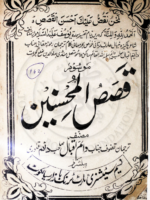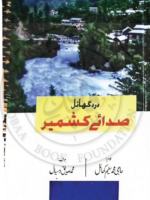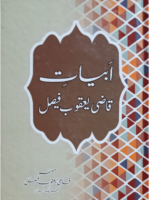-
QURAAN AUR SCIENCI INKISHAFAAT
قرآن اور سائنسی انکشافات
از: پروفیسر ولی رازی
QURAAN AUR SCIENCI INKISHAFAAT
BY : PROF WALI RAZI
” قرآن اور سائنس ” مزید کتب کے لیئے کلک کیجیئے
-
DHATOUN KA QURANI TASSAWUR AUR QURANI DHATOUN KA KEEMIYAI TAJZIA
SCIENCE, One of the Islamic world’s most Significant contributions to modern Science was the translation of Mathematical, Medical, and Astronomical texts from their original languages into Arabic, Muslim Contribution in Science, Science in the medieval Islamic world, Science in the medieval Islamic world was the science developed and practised during the Islamic Golden Age under the Umayyads of Córdoba, the Abbadids of Seville, the Samanids, the Ziyarids, the Buyids in Persia, the Abbasid Caliphate and beyond, spanning the period roughly between 786 and 1258. Islamic scientific achievements encompassed a wide range of subject areas, especially astronomy, mathematics, and medicine. Other subjects of scientific inquiry included alchemy and chemistry, botany and agronomy, geography and cartography, ophthalmology, pharmacology, physics, and zoology. Medieval Islamic science had practical purposes as well as the goal of understanding. For example, astronomy was useful for determining the Qibla, the direction in which to pray, botany had practical application in agriculture, as in the works of Ibn Bassal and Ibn al-‘Awwam, and geography enabled Abu Zayd al-Balkhi to make accurate maps. Islamic mathematicians such as Al-Khwarizmi, Avicenna and Jamshīd al-Kāshī made advances in algebra, trigonometry, geometry and Arabic numerals. Islamic doctors described diseases like smallpox and measles, and challenged classical Greek medical theory. Al-Biruni, Avicenna and others described the preparation of hundreds of drugs made from medicinal plants and chemical compounds. Islamic physicists such as Ibn Al-Haytham, Al-Bīrūnī and others studied optics and mechanics as well as astronomy, and criticised Aristotle’s view of motion. During the Middle Ages, Islamic science flourished across a wide area around the Mediterranean Sea and further afield, for several centuries, in a wide range of institutions .




